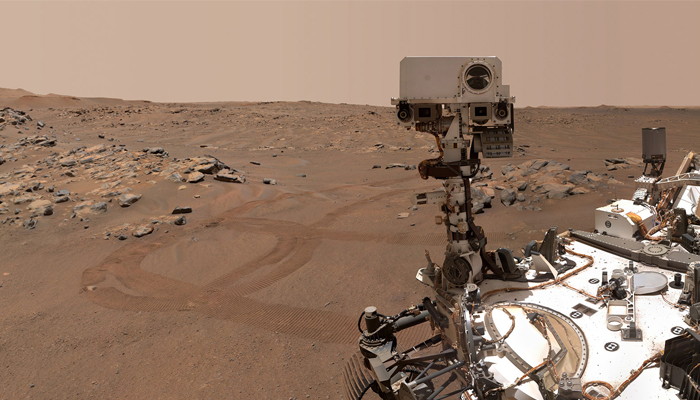Oxygen created on Mars with experts mapping planet for landing
Recent results exceeded the expectations of scientists giving a boost to the hopes of colonising another planet
September 10, 2023

Scientists have recently sought a breakthrough as Nasa's Perseverance rover — carrying an experimental instrument — successfully generated oxygen for two years from the red planet's carbon dioxide-filled atmosphere, but there's a lot of other logistical work remaining before landing.
Despite the success, scientists at New York University Abu Dhabi have been scrambling to first analyse the map — they created using Hope probe — before setting afoot.
The instrument — Mars Oxygen In-Situ Resource Utilization Experiment (MOXIE) — was taken to Mars when Nasa's life-tracing probe landed in 2021.
The recent results have exceeded the expectations of scientists giving a boost to the hopes of colonising another planet.
The experiment also showed that not only life-sustaining gas but also rocket fuel could be created on the red planet, sparing efforts of transporting both of them from the Earth.
Using the images captured by the Hope — orbiting since 2021 — experts created a detailed colour mosaic of Mars.
Dimitra Atri, head of the Mars Research Group at the university, said: "It might sound silly, but maybe in the future it will be very common for people to go to Mars and even live there."
As efforts have intensified to leave Earth, scientists were finding ways and preparing for their flight to Mars.
In June, a simulation of Mars habitat was launched where scientists were to live for the next year.
The exercise is part of Nasa's efforts to get ready for its first crewed mission to the red planet's surface, which could happen in the late 2030s.
The four volunteers will be monitored remotely by a group of Nasa researchers for the duration of their 378-day stay.
What is CHAPEA Mission 1?
According to the Nasa website, CHAPEA (Crew Health and Performance Exploration Analogue) Mission 1 is the first of three simulated Mars missions to evaluate human health and performance in isolation and confinement.
At Nasa's Johnson Space Centre, the crew will work and live in a replica Mars habitat while engaging in scientific experiments and activities like crop growth.
They will be staying in a 1700-square-foot facility with about nine rooms total, including private bedrooms, a shared bathroom and toilet, and a common area.
Simultaneously, the health of the participants will be continuously tracked during their time inside to assist mission planners in comprehending how a real crew might manage various aspects of a protracted mission to Mars.
For maximum realism, the four volunteers will encounter things like communication lags of up to 20 minutes brought on by the great separation between Earth and the red planet.
The participants will occupy their time inside the facility with tasks like scientific investigation, habitat upkeep, crop cultivation, and so-called "Marswalks" on a covered area of land modelled after the Martian surface.
During their 12-month stay, if any of the participants find the conditions intolerable, they will be permitted to leave the facility with a backup member taking their place.









